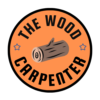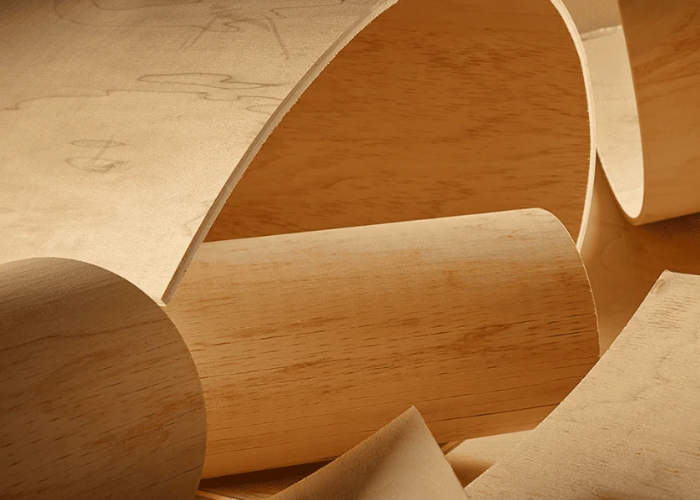Introduction
In the field of woodworking, design captivatingly depends on creativity. One such development that has rocked the sector is bending plywood. It gives the possibility to create elegant curves and contours without sacrificing strength, unlike rigid, straight typical plywood. The versatile and creative material bending plywood has transformed the woodworking sector.
Its special qualities and uses make it a great source for artistic endeavors needing curved or flexible forms. We shall investigate the world of bending plywood in this post, including its features, manufacturing technique, uses, and benefits.
What is Bending Plywood?
Bending plywood, also known as flexible plywood or flexply, is a specially designed type of plywood that possesses a unique flexibility. This flexibility is achieved through a manufacturing process that involves cross-graining layers of thin veneers, allowing the plywood to be bent and molded into various shapes without breaking or splintering.
Types of Bending Plywood
Standard Bending Plywood
It is the most common type and is suitable for a wide range of applications. It is typically used in furniture design, cabinetry, and interior decor projects.
Overlaid Bending Plywood
This plywood is coated with a durable overlay that enhances its surface properties. This type is often used in applications where a smooth and finished appearance is essential.
Multi-Ply Bending Plywood
This plywood consists of multiple layers of veneers, making it exceptionally strong and stable. It is often used in construction projects that require both flexibility and durability.
Manufacturing Process
The manufacturing process of bending plywood involves layering thin veneers at right angles to each other. This cross-graining technique gives the plywood its distinctive flexibility. The veneers are bonded with strong adhesives under heat and pressure, creating a sturdy yet pliable material.
Advantages of Bending Plywood
* Versatility: It can be easily molded into intricate shapes, allowing for limitless design possibilities.
* Strength: Despite its flexibility, bending plywood maintains its structural integrity.
* Cost-Effective: It often requires less material and labor compared to traditional methods of achieving curved designs.
* Time-Efficient: Creating curves with this plywood is quicker and more efficient than using traditional woodworking techniques.
Applications in Interior Design
Curved Furniture

Bending plywood has revolutionized furniture design by enabling the creation of stunning curved pieces that were once challenging to produce.
Architectural Details
Architects and designers use these plywood to add captivating curved elements to their projects, enhancing visual appeal.
Decorative Panels
Bending plywood is used to craft decorative panels that add texture and depth to interiors, creating a unique ambiance.
Applications in Construction
Curved Roofs

Bending plywood is employed in roofing applications to create unconventional and visually striking curved roofs.
Curved Partitions
Incorporating bending plywood in construction allows for the fabrication of elegantly curved room partitions and dividers.
DIY Projects Using Bending Plywood
Curved Planters

Enthusiastic DIYers can use bending plywood to craft eye-catching curved planters that add a touch of nature to their spaces.
Bentwood Rings
This plywood can be fashioned into fashionable bentwood rings, showcasing the material’s flexibility and style.
Flexible Bookshelves

Create unique bookshelf designs that defy convention with the use of bending plywood, offering a visually appealing storage solution.
Tips for Working with Bending Plywood
Soaking the Plywood
Before bending, it’s recommended to soak the plywood in water to increase its pliability and prevent cracking.
Using Jigs and Molds
Crafting jigs and molds helps maintain the desired shape during the bending and drying process.
Proper Fastening Techniques
Choose appropriate fasteners and adhesives to ensure that the bent plywood retains its shape over time.
Maintenance and Care
To ensure the longevity of bending plywood projects, regular cleaning and maintenance are essential. Avoid exposing the material to excessive moisture or direct sunlight.
Cost Considerations
While these plywood may have a higher upfront cost than traditional plywood, its versatility and efficiency can offset the initial investment.
Environmental Impact
Bending plywood’s manufacturing process often utilizes sustainable materials and practices, making it an eco-friendly choice for environmentally conscious projects.
FAQs
1. Can I bend plywood without special equipment?
While bending plywood can be done manually, using specialized equipment and techniques is recommended for better results.
2. Is bending plywood suitable for outdoor projects?
Yes, with proper treatment and finishing can be used in outdoor projects, but it’s essential to protect it from extreme weather conditions.
3. What is the difference between bending plywood and regular plywood?
Bending plywood is designed for flexibility and curved designs, whereas regular plywood is more rigid and suitable for standard woodworking applications.
4. Can bending plywood be stained or painted?
Yes, this plywood can be stained or painted to match your desired finish, offering both aesthetic and functional benefits.
Also read:

